NIL, transfer portal, shifting conferences: Jim Tressel talks future of college football
Jim Tressel doesn’t play mind games with regret.
Perspectives have changed on the Tattoogate scandal that led to his resignation as Ohio State football coach in May 2011 in the wake of name, image and likeness benefits instituted a decade later. But if approached by a fan suggesting as much, Tressel wouldn’t delve into the past.
That doesn’t mean at age 71, retired since stepping down Feb. 1 as Youngstown State University president, he doesn’t understand why his OSU players sold or traded memorabilia for ink.
More on Jim Tressel: Jim Tressel starts to get hang of retirement, enjoys moments with former players, coaches
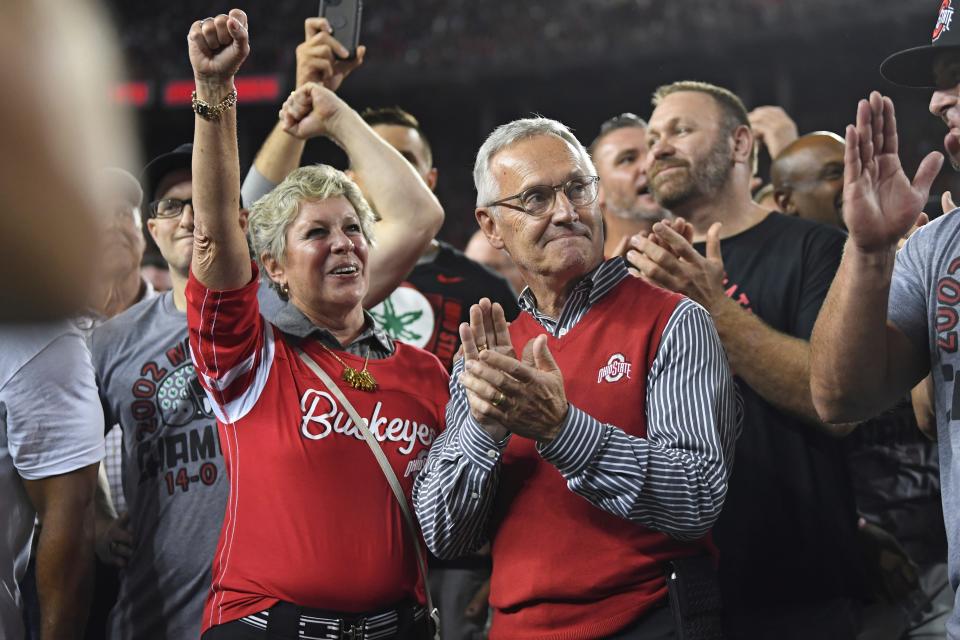
“Everyone saw the revenue skyrocketing and it was confusing for them to not be a part of it. That was a very difficult time for student athletes in that era,” Tressel said in a phone interview Tuesday. “I’m sure they look back and say, ‘See? We were right. We should have been able to …’
“The times are what the times are and the rules at the moment are what the rules at the moment are. You never look back and say, ‘What it we had won that game or what if the situation would have been different?’ It wasn’t and what’s important is going forward.”
During the Buckeyes’ run to the 2002 national championship, All-American safety Mike Doss gave a final presentation in his public speaking class on why college athletes should be paid. Tressel, who went 106-22 in 10 years at Ohio State, has seen the issue step to the forefront with NIL.
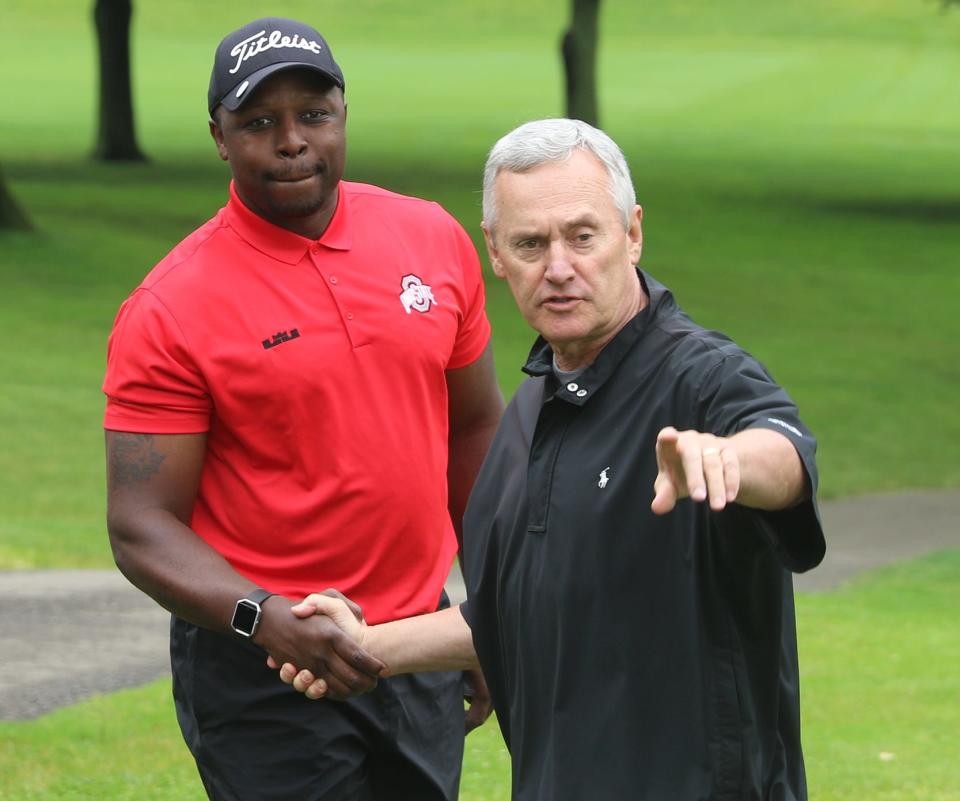
“In the ‘40s, ‘50s, ‘60s, ‘70s, maybe even ‘80s, it was a little bit of the Wild West, but there wasn’t quite as much interest in it,” Tressel said. “Kids might get a free meal here or there or get a better paying summer job or whatever. Then the ‘90s and the 2000s and 2010s, that 30 years when it became so real that there was so much interest coming from so many directions, I think the focus became on compliance and making sure there was no benefit for kids. That became like the bull's-eye. When that happened and the kids weren’t getting even a little bit of help along the way, that’s when it exploded. Now I feel for the coaches that have to take time away from helping them become better young men and spend time having to go out and raise money.”
With the transfer portal giving athletes free reign to switch schools without sitting out a season, university collectives are luring quarterbacks with millions in guarantees and college football appears to be going down the NFL path.
Tressel doesn’t see it that way.
“When people say, ‘It’s going to be like the NFL.’ Well, no, the NFL has salary caps and rules and rookies aren’t allowed to make as much as seven-year vets with the NFLPA,” Tressel said. “College football is a long way from an organization as intricate as the NFL. But I think that’s the challenge. How are you going to have your universities, who must keep their non-profit status to survive … How are you going to get those universities to find a way to have a professional model, a for-profit model with the fact that the courts have ruled 9-0 that students can make money on their name, image and likeness?
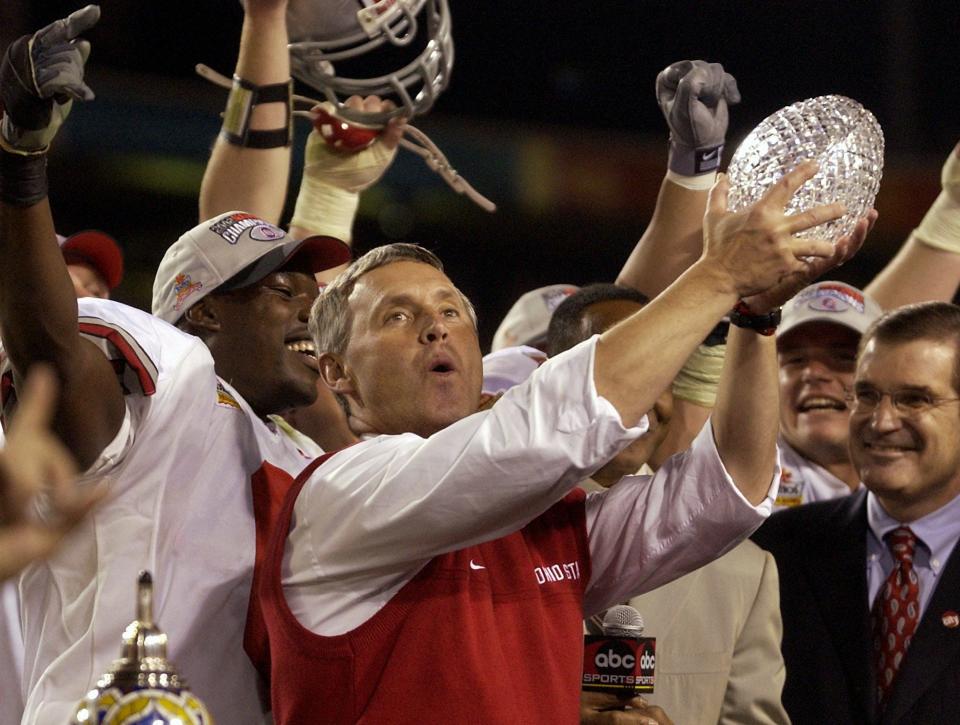
“The NFL, they have their structure based upon the revenue they generate. But then (Patrick) Mahomes can be on every commercial and make more. When Baker (Mayfield) was in Cleveland I thought, ‘What the heck is Baker wasting his time doing all these commercials? Let’s focus a little bit more in the film room or something.’ That’s old-fashioned coach thinking.
“I think college football hasn’t even crossed that conversation of, ‘You’re still not sharing your revenue.’ All you’re doing is giving kids a chance to go have a pop stand and if it’s them at the pop stand, people are going to come and pay a lot of money for a pop. I think there’s a lot of conversation to be had. The federal government will have to be a part of it because the NFL has their anti-trust (exemption). You can’t do it with state governments because they’ll all do it differently.”
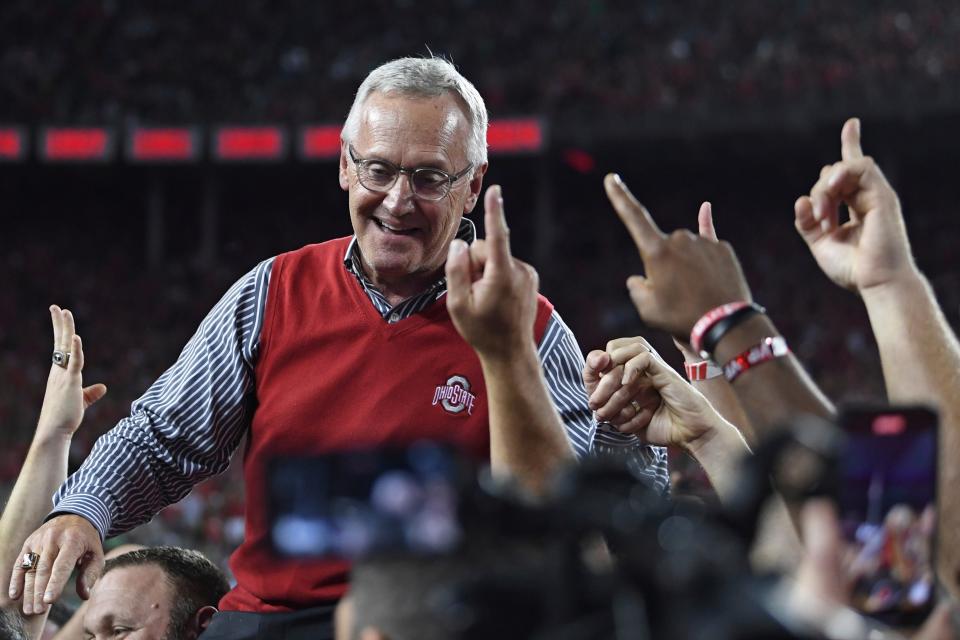
Tressel accepts the approval of the transfer portal, albeit grudgingly.
“The argument is, ‘Well, coaches leave so to better their opportunities, why wouldn’t students be able to?’ I guess I understand that argument, although I think students are at a different stage in their life than professionals,” Tressel said. “There are some really good lessons to hanging in there and working your way through and understanding things aren’t always perfect immediately and you have to sometimes wait your turn and grow a little bit. I think that’s one of the great values of sport – you leave high school and you’re the star and, all of a sudden, it’s tough. That makes you better. After five or 10 years of the portal, it’s going to be interesting to see what percent of the students that it helped and what percent was it maybe a mistake.
“The portal side of things, I’m not a fan, but the rules are the rules. The NIL part of things, that’s part of reality now. It’s probably our own fault over the last decades and decades and decades as revenue and interest in collegiate athletics grew and grew and grew that the numbers were becoming so high, yet the student athletes weren’t necessarily enjoying any of that growth. Hindsight is easy, but we probably should have come up with a way to have the students a part of it, whether it was annuities, endowments, put money aside. But we didn’t, so now we’re in this situation.”
Asked if he can picture college football 10 years from now, Tressel said he’s had a vision for much longer than that.
“I felt 15-plus years ago that at some point in time there were going to be like four major conferences, and it would be a little bit like the NFL model,” Tressel said. “Let’s face it, there’s maybe 70, 75 schools that you would call power conferences, and then there’s a whole bunch in the middle that probably it’s not the best thing for them to aspire (to) because those universities just can’t afford that. But everyone is trying to reach into the pot of gold in that power area.
“Chip Kelly brought up an idea that there should be just one conference, just like the NFL has one league and they have regional divisions, and they have a built-in playoff. That could happen.”
Last month UCLA coach Kelly saw Washington State and Oregon State left without a league affiliation by the dissolution of the Pac-12, which Tressel also laments, and Kelly proposed a 64-team Power 5 Conference and a 64-team Group of 5.
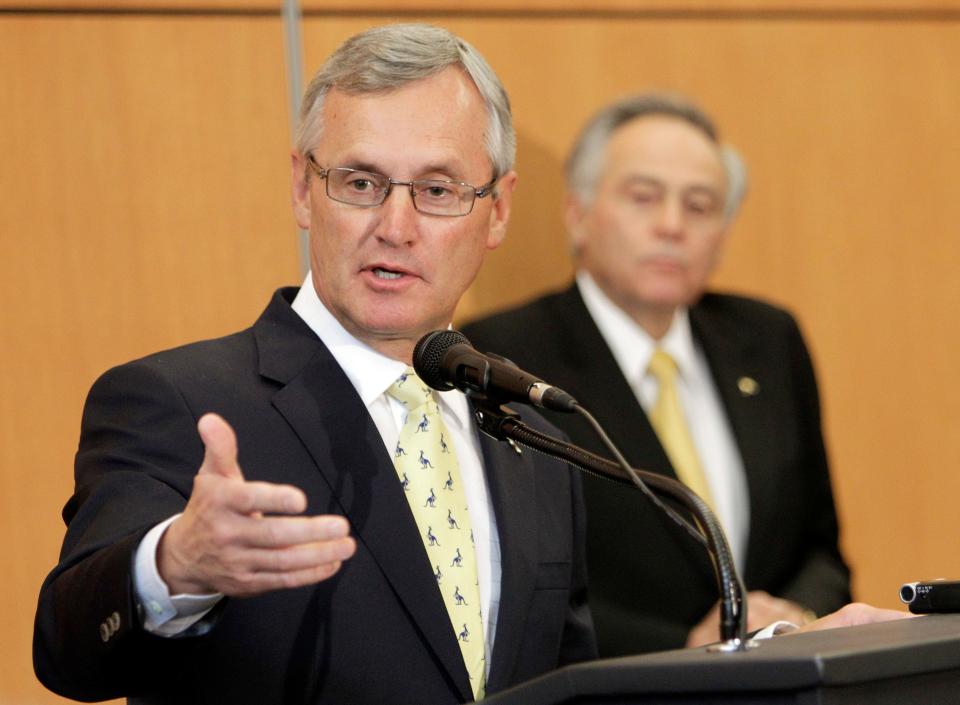
Along those lines, Tressel has long believed that Mid-American Conference members like Akron and Kent State should drop down to the Football Championship Subdivision (FCS). After leaving OSU, Tressel served as executive vice president for Student Success at UA, then was hired as Youngstown State president in 2014.
“Having been a president and seeing the difference in the athletic budget at Youngstown State, we were FCS, but we were Division I in everything else. We had 500-something student athletes and our budget was probably less than half of what the MAC budgets are,” Tressel said. “The majority of them have fewer student athletes and they’re spending twice as much money. All universities, even the Ohio States of the world, have financial challenges. I’ve always been a believer that FCS was the place for them, but their boards and their alumni beg to differ, which is their right.”
Tressel keeps in touch with Ohio State football coach Ryan Day, who is bringing in quarterback Will Howard of Kansas State in the transfer portal after 2023 starter Kyle McCord left for Syracuse. The Buckeyes looked to upgrade with Oregon, Washington, USC and UCLA joining the Big Ten next season.
“I know Ryan’s very impressed with the maturity of this quarterback that’s coming in, his selflessness, in a short time,” Tressel said of Howard.
Under fire after losing his third consecutive game to Michigan, Day was endorsed Monday for running a “fantastic program,” by new OSU President Walter “Ted” Carter, who said Day will continue to coach the Buckeyes. Day is 1-3 against the Wolverines, undefeated national champions after beating Washington 34-13 Monday night.
“You lose one in a row to Michigan and they’re mad at you,” said Tressel, who went 9-1 against Michigan. “He’s faced some good Michigan teams. You have to admit, they looked good (Monday) night.
“The job is to try to become better. It’s a little bit harder with this world that we live in, or maybe it’s not harder, maybe you can improve more, I don’t know. He’s focused on the task at hand. Sure, he feels it. You feel it every day as the head coach at Ohio State. But I don’t think he allows it to take him away from what he knows he needs to get done as a head coach and recruiter and father and husband and all that. He’s a pretty solid guy. in my opinion.”
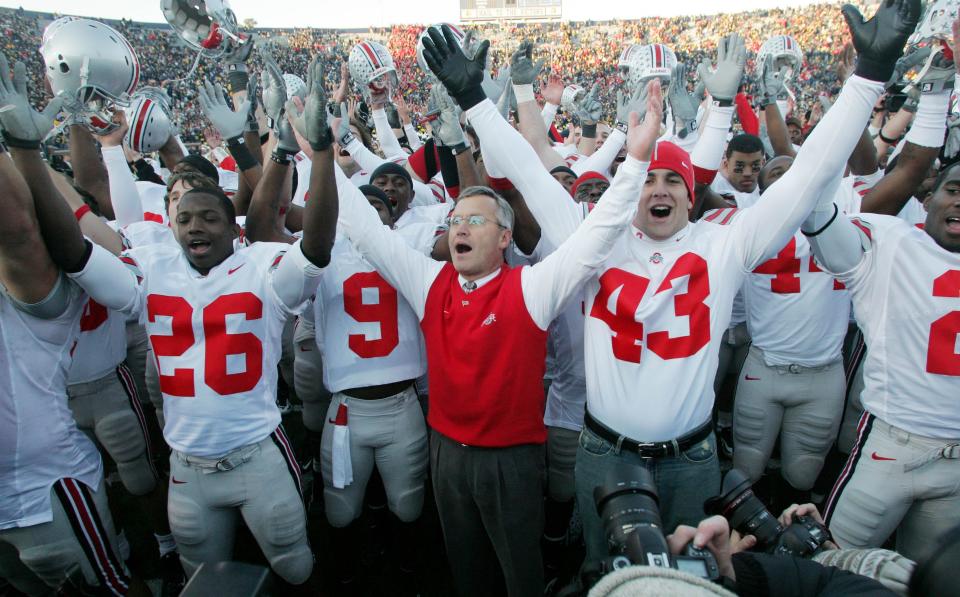
Wintering in Florida, Tressel brought along a few books from his shelf at home in Medina that he’d been meaning to read. His current selection is ‘Values of the Game,’ by Bill Bradley, a Rhodes Scholar, Olympic gold medalist, basketball Hall of Famer with the New York Knicks and a former U.S. Senator from New Jersey.
“It’s really interesting,” Tressel said of the book. “Are we losing the value of sport?
“That’s what frightens me the most. The value of being part of a team and the value of going through the difficulties of growing within that team, I’m just afraid those might be secondary right now. That breaks my heart.”
This article originally appeared on The Repository: Former Ohio State coach Jim Tressel on college football's future

